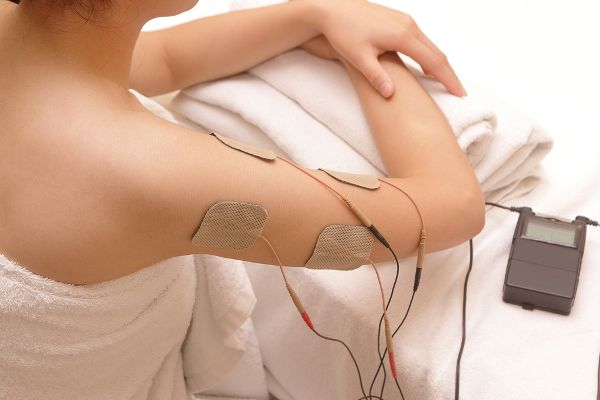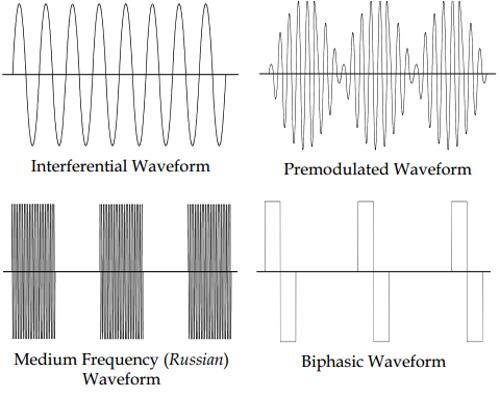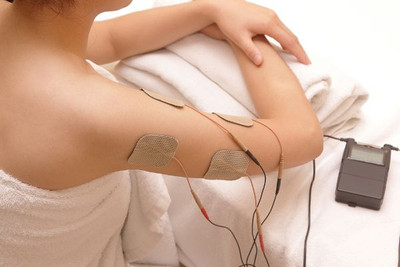 16th Aug 2017
16th Aug 2017
Electrotherapy Indications and Contraindications
 Electrotherapy (also known as electrical muscle stimulation or e-stim) involves using a device to apply electrical energy to a patient’s body in order to promote healing in muscle and other body tissues. It is important to consider the indications and contraindications of electrotherapy before treating patients as there are scenarios to avoid. Electrical stimulation machines are most commonly used by physical therapists and chiropractors, because of its numerous advantages for rehabilitation. When deciding if e-stim is right for a patient please consider the following benefits and red flags for and against electrotherapy as a treatment modality.
Electrotherapy (also known as electrical muscle stimulation or e-stim) involves using a device to apply electrical energy to a patient’s body in order to promote healing in muscle and other body tissues. It is important to consider the indications and contraindications of electrotherapy before treating patients as there are scenarios to avoid. Electrical stimulation machines are most commonly used by physical therapists and chiropractors, because of its numerous advantages for rehabilitation. When deciding if e-stim is right for a patient please consider the following benefits and red flags for and against electrotherapy as a treatment modality.
The Benefits of Electrical Stimulation
The use of electrotherapy has been acknowledged by the American Physical Therapy to provide the following benefits:
- managing and reducing pain
- helping with blood flow and improving circulation
- facilitating the repair of muscle and other body tissues
- improving the effectiveness in delivering prescription drugs – electromotive drug administration (EMDA)
How Does Electrotherapy work?
Electrotherapy is a device that uses electrodes that are attached to patient’s skin. During treatment, electrical stimulation sends an electrical pulse that causes specific muscles to contract. This contraction is useful for several reasons:
- The contraction allows muscles to maintain strength and muscle tone.
- The contraction prevents atrophy from disuse.
- Electrical stimulation allows contractions that mimic the ways the body moves during exercise thereby increasing range of motion.
Each electrotherapy device comes with different waveforms. These waveforms perform differently and have varied rehabilitative attributes and benefits for different patient populations.
The Most Common Electrotherapy Waveforms
 Russian: The Russian Current waveform is a type of electrical stimulation that delivers medium frequency current in alternating pulses or bursts of energy and is effective in reducing pain as well as increasing muscular strength.
Russian: The Russian Current waveform is a type of electrical stimulation that delivers medium frequency current in alternating pulses or bursts of energy and is effective in reducing pain as well as increasing muscular strength.- High Voltage Pulsed Current (HVPC): High voltage current is able to achieve deeper tissue penetration making it effective in facilitating wound healing and relieving muscle spasms.
- Interferential: Interferential waveforms work at a higher frequency and is able to address chronic, post-surgical and post-trauma acute pain in patients.
- Premodulated: Premodulated waveforms use a single channel is used to mix the frequencies prior to delivery of the current through the electrode of the body and is effective in treating smaller muscle groups, joints and injuries closer to the skin.
- Microcurrent: Microcurrent waveform utilizes micro-size, pulsating current to resonate with the body’s own bio-electrical exchanges that take place at the cellular level, making it more comfortable for patients and is useful in treating wound and damaged tissue.
INDICATIONS OF ELECTROTHERAPY
Some of the indications and corresponding benefits of electrotherapy include:
- Relaxing muscles spasms: From sciatic nerve pain to impinged nerves in the shoulder, e-stim can help relax and reduce muscle spasms.
- Preventing or slowing tissue atrophy due to disuse: Since e-stim is able to produce contractions that mimic the body’s movements, this helps prevent atrophy such as stroke patients recovering the use of their limb(s).
- Increasing blood circulation: By activating the muscles, e-stim enhances blood flow and can be used in post-recovery for athletes and the typical patient population.
- Re-educating muscles, such as in situations where a muscle injury limited its use: E-stim can be used to initiate muscle recruitment, for example, research has shown that the use of e-stim helps patients regain strength following a total knee arthroplasty (TKA).
- Maintaining or increasing range of motion: Electrotherapy can be used to aid in increasing a patient’s range of motion. Research has shown that e-stim is helpful in improving motor recovery and range of motion in patients with hemiplegia.
Indications for microcurrent, intereferential, premodulated, and TENS electrotherapy waveforms also include:
- Reducing symptomatic, chronic, intractable pain
- Lowering acute pain related to trauma
- Lessening acute pain related to surgery
CONTRAINDICATIONS OF ELECTROTHERAPY
As with any rehabilitative modality, electrical stimulation has a list of contraindications. The electrotherapy as described here should be used subject to these contraindications:
- It should not be used to treat symptomatic local pain unless the cause of the pain has been clearly diagnosed.
- Electrotherapy should not be used in areas of the body where cancerous lesions exist.
- The treatment should not be applied in areas of the skin that are swollen, infected, or inflamed (e.g. varicose veins)
- Patients suspected of having serious infectious diseases or diseases that require heat or fevers to be suppressed should not be treated with electrotherapy.
- Electrotherapy current should not be applied to the anterior neck (carotid sinus) or through the head.
- Women who are pregnant should avoid electrotherapy treatment, as safe use has not been established for pregnancy.
- Patients with cardiac demand pacemakers should not be treated using powered muscle stimulators.
- TENS waveforms should not be used on patients who have cardiac demand pacemakers.
For specific precautions and detailed information regarding the proper use of electrotherapy, it’s recommended to refer to the user manual for your clinic’s specific electrotherapy device. We publish the user manual for the Intelect Legend XT Electrotherapy and Combination Therapy Systems as a convenience.
Electrotherapy is a popular pain-relieving modality in rehabilitation because it has broad applicable use without the unnecessary or sometimes unpleasant side effects that oral painkillers and anti-inflammatory medications may cause. From treating professional athletes recovering from at work injuries to patients suffering from chronic pain conditions, electrical stimulation is a great choice for safe, non-invasive pain management.





